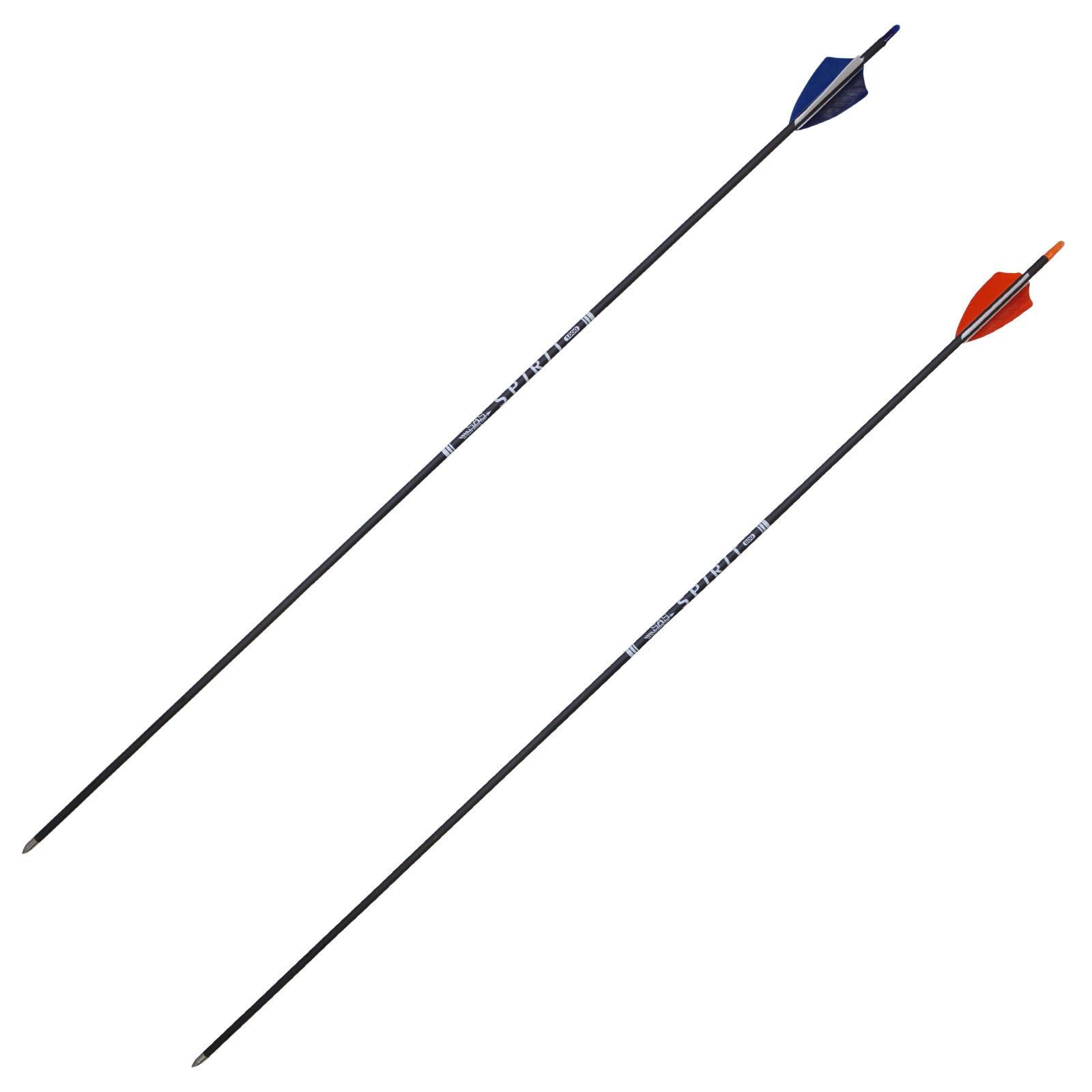US 48 States Only.
Tax Free Outside CA.
US 48 States Only.
Tax Free Outside CA.
US 48 States Only.
Tax Free Outside CA.
US 48 States Only.
Tax Free Outside CA.

You’ve got the bow, you’ve got the will to conquer this stuff, but you still lack something crucial: the right arrows for a compound bow or recurve bow. It’s easy to underestimate just how important this detail is to your shooting journey— finding the best arrows for your bow is simply essential to conquering the sport!

How to choose arrows, though? There are so many offers, deals, and types of arrows that it can get pretty baffling. Lots of factors like length, weight, fletchings and vanes get thrown into the mix and the result is one confused would-be archer.
Fear not! This is your guide to choosing the right arrows for both recurve bows and compound bows.
We’ll take a good look at all the essential items you have to consider.
Materials
Let’s start with the basics: the stuff your arrows are made of. This will influence other factors like weight and accessories. For compound bows, the best and most common arrows are made of:
Length
Just like wearing shoes that are too small or too big would eventually hurt you, using the wrong length of arrows for your recurve or compound bow will damage it. Only more spectacularly— it can ruin the entire set-up for good (too short) or lose both accuracy and speed (too long).
Your bow requires a specific length of arrow, just a tad longer than your draw length. How do you calculate arrow length?
First, you need to figure out your draw length. Here’s an easy way:
If you’re a beginner, it’s better to err on the side of caution. For a compound bow, pick arrows that are on the longer side of your draw length by 3 inches (7.6 cm). For a recurve bow, make that 2 inches (5 cm) instead.
This will make your shots a little wobbly but, as you progress, you can get more accurately-sized bolts— an advanced archer aims for 1 inch (2.5 cm) longer than the draw length.
Keep in mind: many arrows come in one size but can be professionally cut to fit the length you need. You can only do this one time, however, so pay close attention!
Diameter
How thick is the arrow? Here, what you’re looking for depends on what kind of archery you practice:
Now you know the basics about arrows for compound bows and recurve bows. In PART TWO of this guide, you’ll find more crucial factors for choosing your arrows as well as the calculations to figure it all out. You’ll be shooting in no time!

Leave a comment